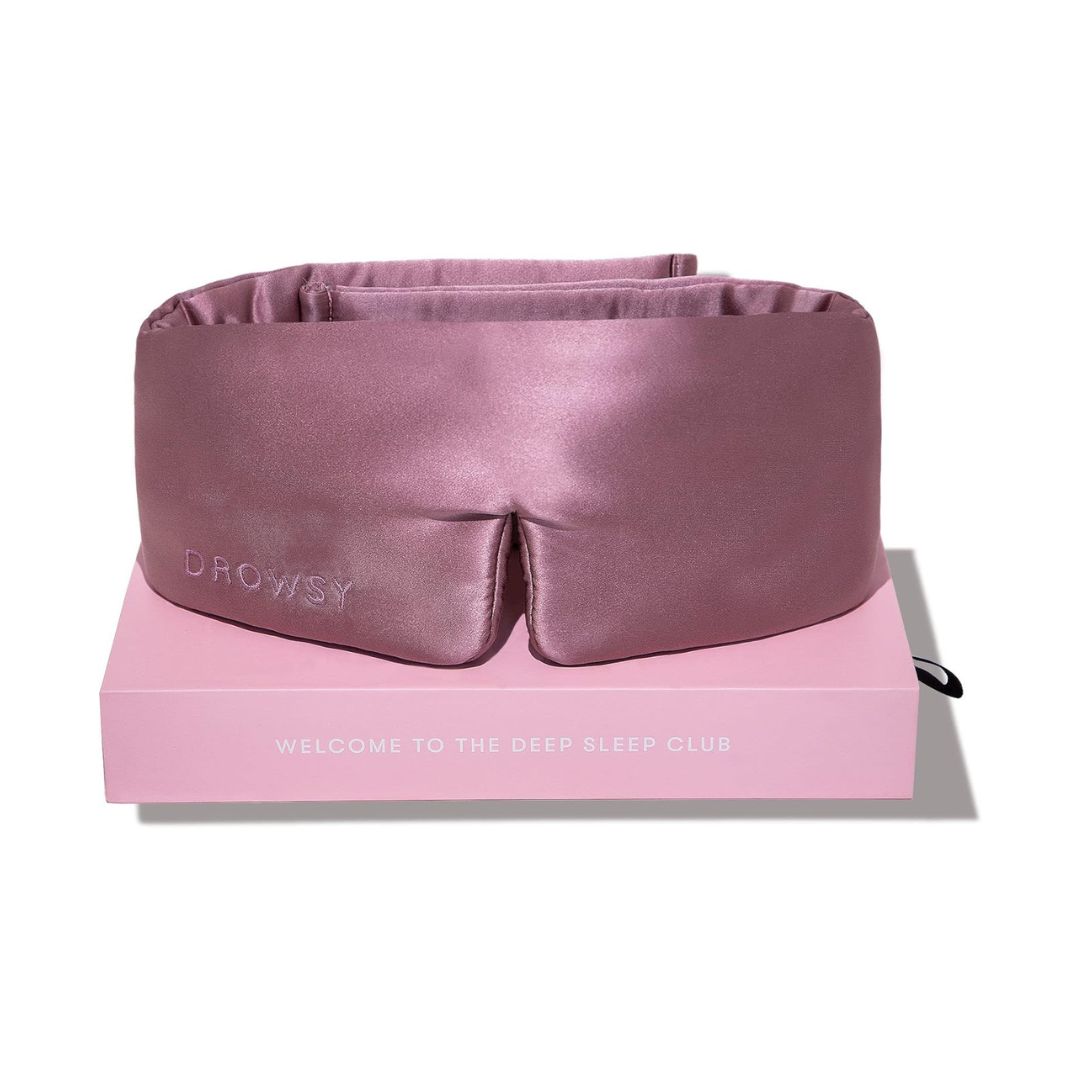I Practiced Child's Pose Religiously for a Month — and It's Eased Hip and Spine Stiffness Like a Total Treat
Incoming: a love letter to this OG pose.
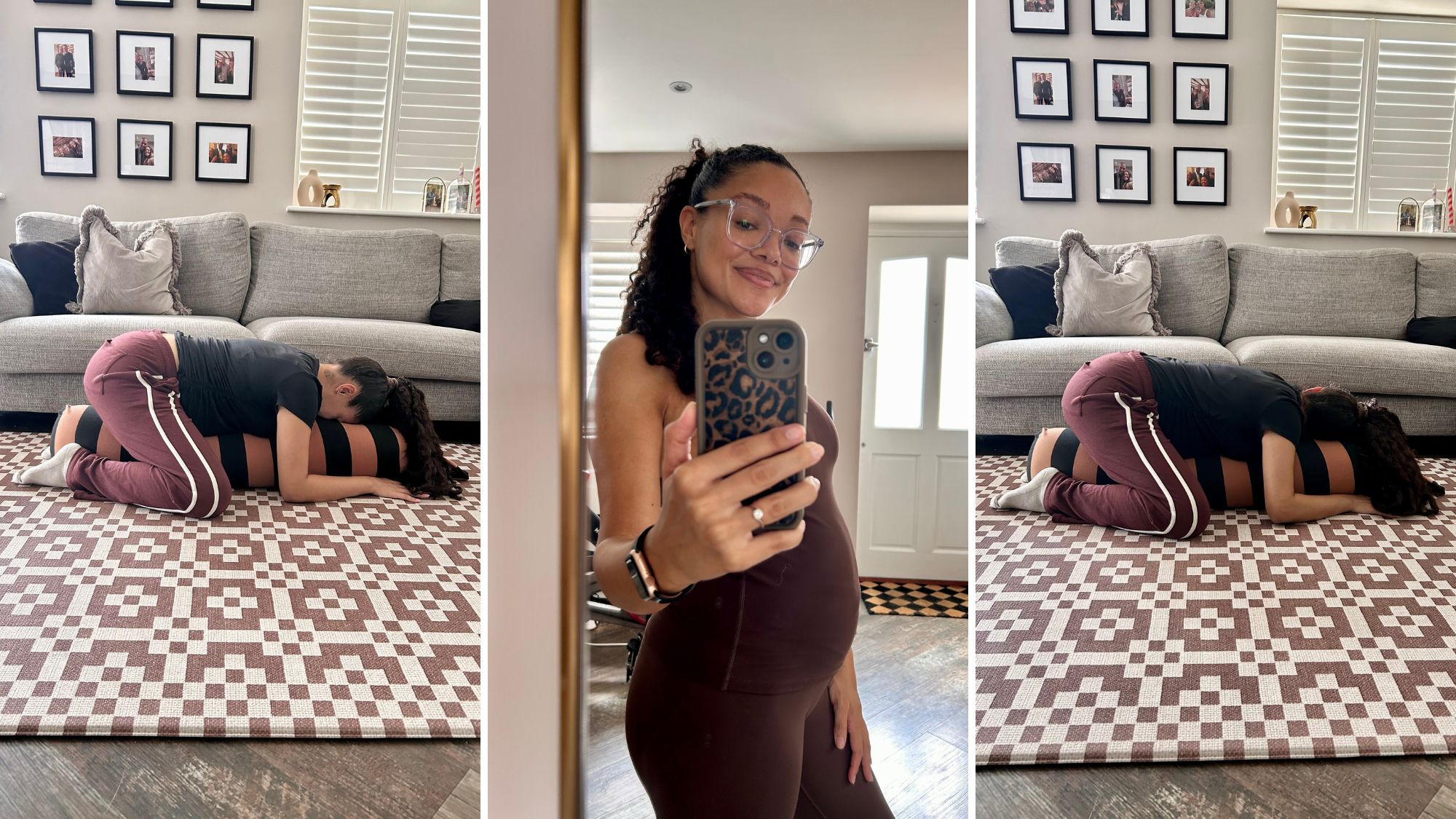

In my movement routine, stretches come and go. But there are always a few fan favourites that I come back to - like child’s pose. Suitable for most fitness levels? Yep. Restful? You betcha! Kind to your hips and spine? 100%. At eight months pregnant, these are just three of the reasons why I’ve been doing child’s pose every day for the past month.
But, before I wax lyrical about this legendary yoga move, it probably makes sense to bring you up to speed as to what this restorative pose is. “Child’s pose (Balasana) is a gentle, forward-folding yoga pose that involves kneeling, resting your forehead on the floor, and extending your arm either forward or back,” explains Natasha Tavares, personal trainer and certified yoga instructor at Yoga-Go. “Its popularity and recognition likely stem from its simplicity and effectiveness,” the expert adds. “Child’s pose is one of the most beginner-friendly yoga poses, requiring little to no flexibility, yet it provides significant benefits such as reducing feelings of stress and anxiety while gently stretching the spine, hips, thighs, and ankles.”
Of course, child’s pose isn’t the only way to find some space in your body. For example, when performed correctly, lower back pain exercises can offer some relief. The same applies to boosting your core strength, maintaining good posture and completing hip strengthening exercises. But, as a 2023 trial found, stretching (like dropping down and getting your child’s pose on) can be "effective" for those with non-specific low back pain.
So, now in my third trimester and with an achy back and tight hips in tow, in the name of journalism, I decided to give this humble move a go. Keep scrolling to find out how I got on. Plus, while you’re here, discover the best yoga moves for lower back pain and try out these yoga exercises for better flexibility. Now that we're well into autumn, it might be worth checking out the benefits of hot yoga, too. Or, if stretching is your thing, you might also be interested in discovering what happened when one writer committed to stretching every day for a year.
Child's pose is one of the most renowned exercise moves of all time - so I tried it for a month
What is a child's pose?
In a sentence, child's pose is a floor-based move where you sit back on your heels and knees and fold forward, with your forehead resting on a yoga mat, bolster, block or cushion.
"The posture is called child's pose because its Sanskrit name, Balasana, is derived from Bala (child) and āsan (posture)," HOME yoga teacher, Claire Missingham, tells me. "It is a neutral, resting pose that calms the central nervous system, which is why it feels so relaxing and restorative."
Missingham says that child's pose is so well-known because it inherently represents surrender. "Folding forward with the head toward the earth symbolises humility, surrender, and grounding," the expert adds. "In some teachings, it represents a return to a womb-like state, echoing safety, protection, and renewal."
Celebrity news, beauty, fashion advice, and fascinating features, delivered straight to your inbox!
To master this move, Taveres suggests:
- Starting by kneeling on the floor with your big toes touching and knees together
- Sitting back on your heels, fold your torso forward, resting it on or between your thighs.
- Extend your arms forward with palms down for more of a stretch, or alongside your body with palms up for more of a rest
- Let your forehead rest on the floor, mat, block, or a cushion
- Breathe slowly and deeply. Try to focus on feeling your breath in your belly.
What are the benefits of trying child's pose?
From improved flexibility and mobility to increased muscle strength and heart health - the benefits of yoga are no secret. But according to experts, child's pose brings with it some benefits of its own.
"Balasana is profoundly beneficial for the parasympathetic nervous system — the 'rest and digest' system," Missingham says. "It relaxes you and triggers the release of hormones through the endocrine system that help the body to relax and counteract stress, fostering calmness and introspection."
According to the expert, the full spectrum of child's pose benefits includes:
- Relief from back tension: "It gently lengthens the spine and decompresses the lower back," she says.
- Calming the mind: "The forward fold, resting the forehead on the ground, helps quiet the mind and encourages pratyahara (sense withdrawal)," Missingham explains.
- Improved Digestion: "The gentle pressure on the abdomen can aid in digestive health," Missingham adds.
- Energy Balancing: "Energetically, it's thought to soothe apana vayu (the downward-moving energy) and balance excess rajas (agitation)," the expert tells me.
But the long list of benefits doesn't stop there. A study found that child’s pose can “gently stretch the shoulders, neck, back, hips, thighs, and ankles”, too. While a research article found that child’s pose can be great for “calming and improving sleep”.
Another brilliant plus point? Yogi Tavares tells me that for most people, child's pose is safe to do every day. “It can be practiced daily as it is low-impact, gentle, and restorative," she says.
However, the expert notes that those with severe knee injuries, hip limitations, or very low blood pressure may need to use modifications, choose alternative poses, or practice it less frequently. "If you’re unsure, or if you find it uncomfortable, I would always recommend consulting a medical professional,” the yoga instructor highlights.
Who is child's pose best for?
“Child pose can be done by most people, but is specifically helpful for yoga beginners, anyone looking to relieve back, shoulder or hip tension, and those seeking a calming, stress-relieving stretch,” Taveres notes.
The yoga instructor says that with modifications, it is also extremely beneficial for pregnant practitioners, thanks to its ability to stretch the spine and pelvic muscles. “It may also relieve lower back pain often associated with pregnancy," she adds. Noted!
I’ve been practicing child’s pose every day for a month — this is what happened
Weeks one and two
Having got the green light from my midwife and the motivation to move, I've been lucky enough to feel able to exercise throughout my pregnancy as I've been doing prenatal yoga and Pilates weekly.
However, with a growing bump, I've had to modify the pose. “Simply widen the knees as much as feels comfortable to create space for your stomach, and use pillows or bolsters under the chest, torso, or forehead for added support,” Taveres suggests. “I would also recommend keeping your arms extended rather than tucked under your body, though you can adjust to what feels right for you," the expert notes. "Most importantly, avoid any belly compressions, listen to your body, and hold the pose only as long as it feels supportive.” Got it!
That said, when week one of practising child's pose every day for a month rolls around, I felt more than ready to get going. I didn't set specific times as to when to complete this pose. Instead, I just did it intuitively when it felt right. In my case, more often than not, that was right before bed.
Therefore, during the first week of this challenge, I spent most of the time resting in this pose on a yoga mat by the side of my mattress before catching some ZZZs. Some days, this pose felt easier than others, but I think that's all down to how much (or little) movement I had ticked off in the hours before. As Taveres highlighted, I found that shifting my knees wider than usual helped to accommodate my bump, and it felt more restful to have my arms extended overhead rather than placing them anywhere else. After 30 seconds of sinking into this position, I could feel my hips melting closer to the mat and my back relaxing. I also noticed that having my knees wider than usual felt satisfyingly achy to begin with - but by the end of the week, it felt like second nature.
Week two, and I'd got to grips with the move, I migrated my practice to my bed. In the UK, the NHS recommends that the safest position to go to sleep when pregnant is on your side, either left or right. And while this should prove to be no problem for side sleepers, for those who prefer to sleep on their front, back, or toss and turn between all of the above (hello, me!), it can make falling asleep a little bit harder.
I say this because I've found that when sleeping on either side for a prolonged period of time, both of my hips start to go numb. But that's where the low-impact exercise that is child's pose has been a blessing in disguise. During the middle of the night, when I felt a numbness creeping on, I would wake up and position myself in this restorative pose. After a week of doing so, it proved to be a foolproof way of keeping my hips happy.
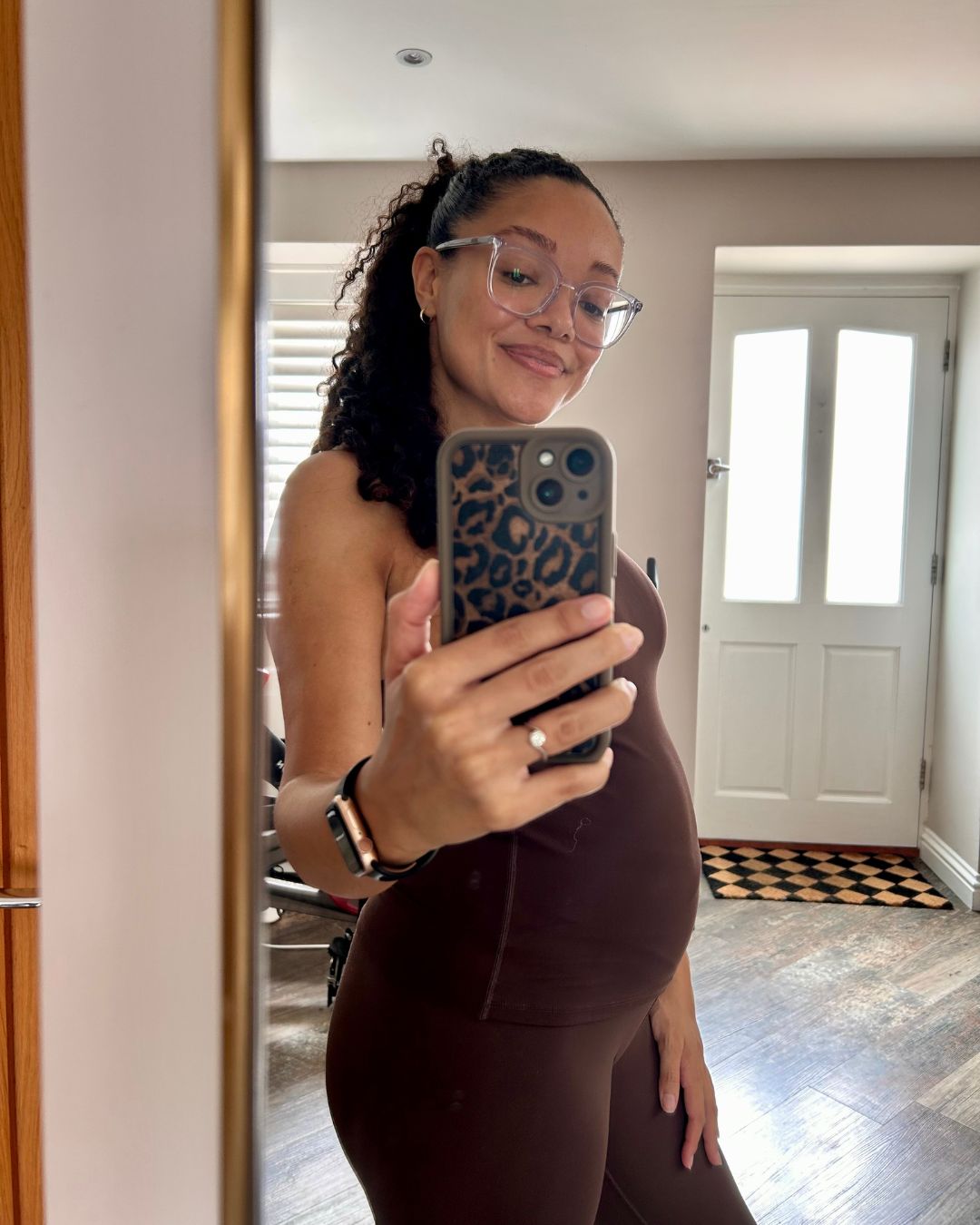
Health writer Becks Shepherd during her child's pose challenge
Weeks three and four
By week three and four, I decided to add a bolster to my child's pose practice, no matter whether I was doing this on my mat or mattress. Doing so helped to supercharge the comfort levels as it helped bring the ground to me and gave me a place to rest my head and torso, without feeling like they were suspended in the air.
It felt that by making this very simple addition, I had created a safe little cocoon for my body and bump to rest. And while adopting this pose, I could feel the tension in my lower back decompress, the tension in my hips melt away little by little, and it gave my head a place to rest (and really rest) while blocking the rest of the outside noise out.
As a Health and Fitness writer and lover of movement, it will come as no surprise to hear that most wellbeing challenges are my kryptonite. I love being able to set myself a goal, try something new and learn what works (and what doesn’t) for my body. And I've found that doing child's pose every day for a month was no different.
Since being pregnant, I’ve tried to stay as active as I can. On some days, this meant going for a long walk to stretch my legs and get some steps in. On others, it meant attending workouts, like a Pilates class or yoga session. But towards the later stages of pregnancy, I’ve really leaned towards any movement that just feels good for my mind, body and back - and, as I've witnessed first-hand, child's pose nails it every time.
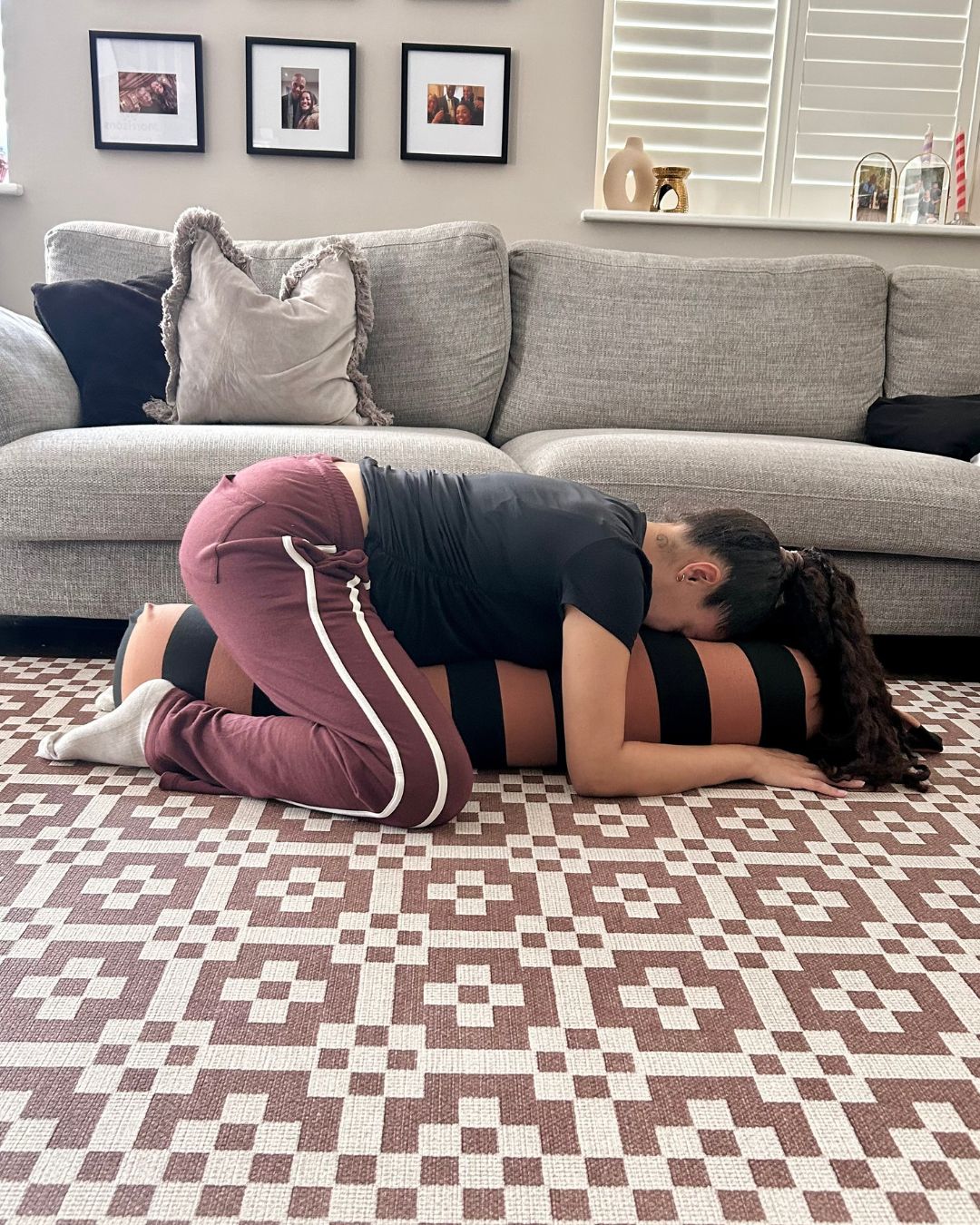
While adopting this pose, Becks felt the tension in her lower back decompress, the tightness in her hips melt away little by little, and her mood lift.
Shop MC UK's go-to yoga kit now:
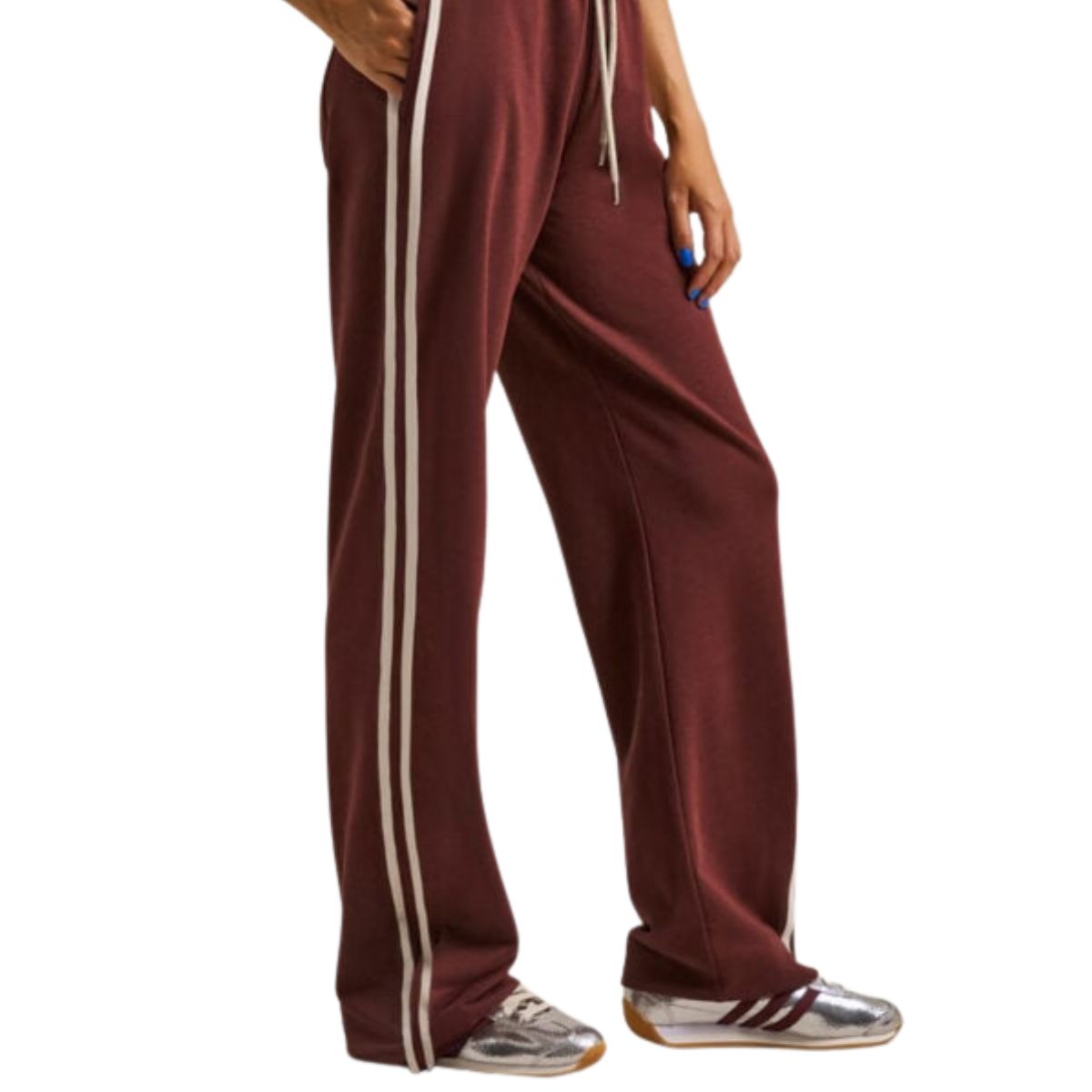
One of the greatest things about doing child's pose is that you come to the mat in whatever you feel comfortable in. For me, these outrageously soft, lightweight and elasticated waist sporty joggers worked a treat every time, especially during the first couple of weeks. They scoop bonus points because they wash (and re-wash) so well.
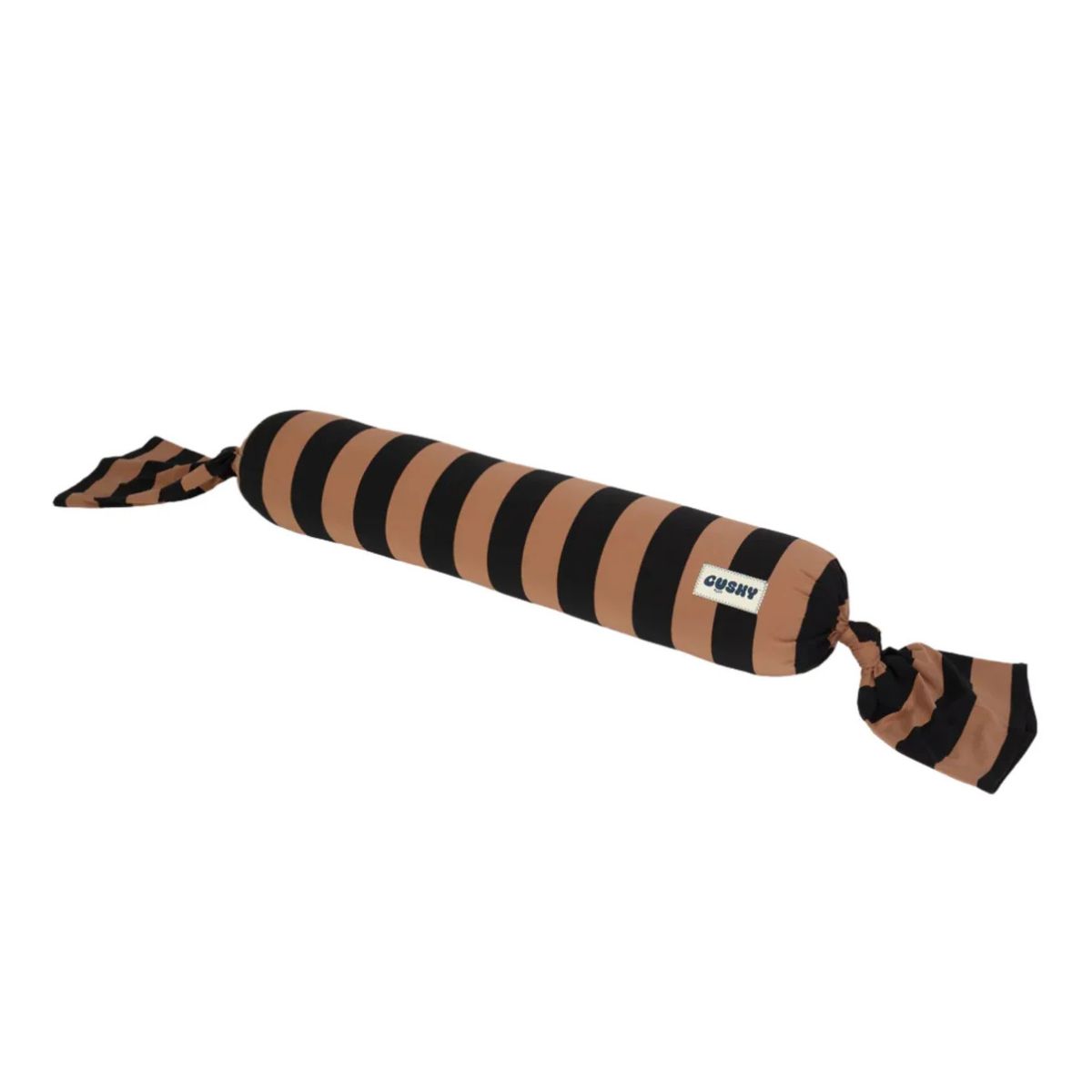
I didn't have a yoga bolster to hand, but let me tell you, when I say this larger-than-life pregnancy pillow (which has been a godsend for sleeping comfortably while not being able to do so on my back or front) is the next best thing for helping with better body alignment and next-level relaxation.
How long can you do child’s pose for?
That's a good question. “The length of time you hold child’s pose will depend on your fitness level and flexibility," Taveres says. "For those new to yoga or stretching, it’s best to start with 30 seconds to one minute."
However, as you progress, Taveres says that you can extend the hold to two to five minutes. "In restorative yoga, it can even be held for ten minutes or longer with the support of props," Taveres says.

Rebecca, or Becks, is a freelance journalist with more than ten years of experience in the industry. She specialises in all things health and lifestyle and has written for a number of brands including Women's Health, Stylist, the Evening Standard, Good Housekeeping, The Telegraph, Live Science, Tom's Guide and Fit&Well. Becks also writes copy for a number of brands and small businesses.
When she's not weight training, tracking down the best gym leggings, reading a book or at her desk typing away, you'll find her in the kitchen perfecting a new recipe or bake.
